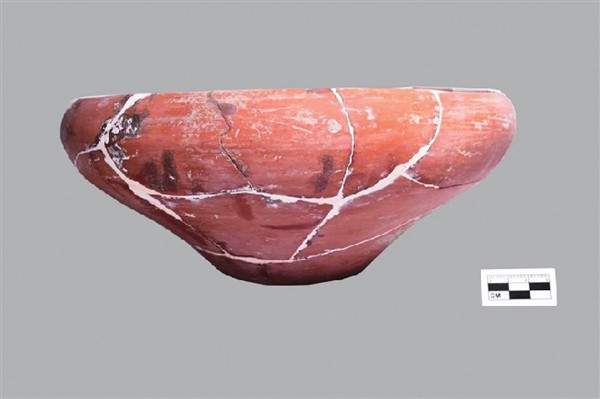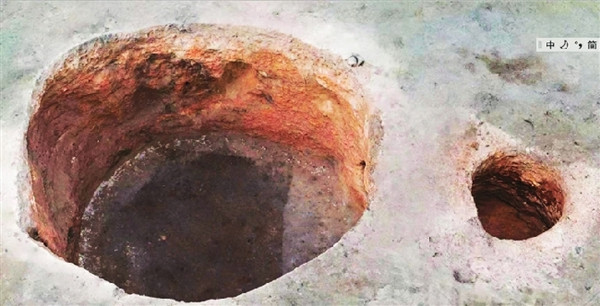
An unearthed red pottery bowl from the Yangshao Culture relic site in Zhencheng village, Taiyuan [Photo/Taiyuan Institute of Cultural Relics and Archaeology]
The Shanxi Institute of Archaeology and Taiyuan Institute of Cultural Relics and Archaeology recently identified a cultural relic site in the provincial capital of Taiyuan as remains from middle to late Yangshao Culture, a Neolithic culture that existed extensively along the Yellow River in China between 7,000 years and 5,000 years ago.
The relic site excavated from May to July is located 900 meters southwest of Zhencheng village, Baiban township, Jiancaoping district.
A total of 98 ash pits, 11 pottery kilns, two house sites, and six tombs from the Ming (1368-1644) and Qing (1644-1911) dynasties were excavated at the site. A large number of pottery pieces, stone tools, human bones, and animal bones were discovered.

Relics of an old stove pit and flue at the Yangshao Culture relic site in Zhencheng village [Photo/Taiyuan Institute of Cultural Relics and Archaeology]
According to Pei Jingrong, the person in charge of the archaeological excavation, the majority of relics at the site come from the middle and late period of Yangshao Culture and are of strong academic value to the research of Neolithic and prehistoric cultures in the Taiyuan basin, as well as prehistoric cultural exchanges in Taiyuan and surrounding areas.
The excavated site is similar to the Yijing relic site excavated in the 1950s and the Qingxu Dugou site excavated in 2001 in Taiyuan.
The site is located just 500 meters north of the Zhencheng site of Longshan Culture (a Neolithic culture in the middle and lower reaches of the Yellow River that existed between 4,500 and 4,000 years ago). The two sites provide new material information for discussing prehistoric human migration, settlement changes, and prehistoric productivity development.
